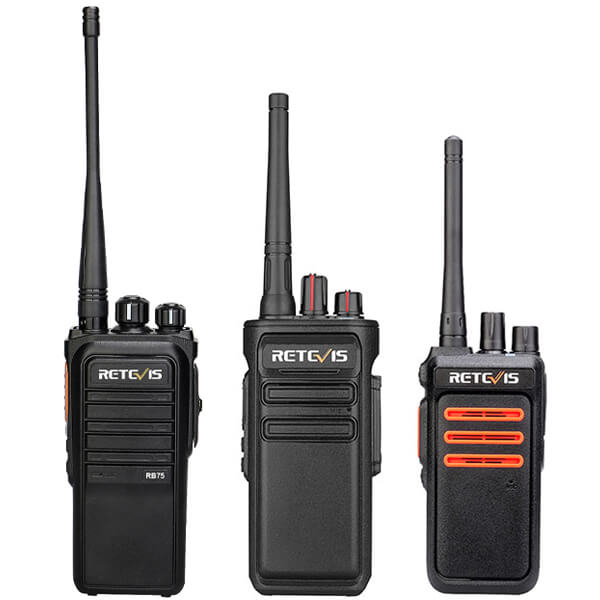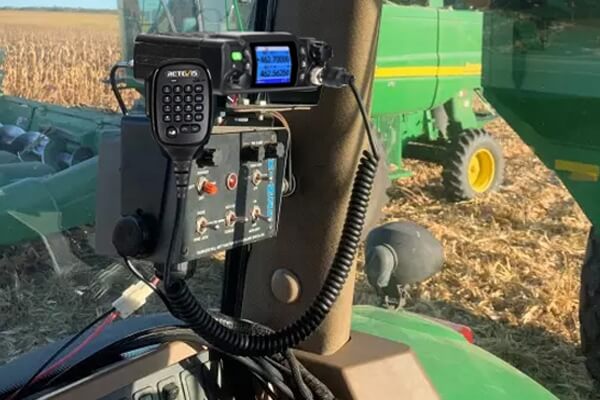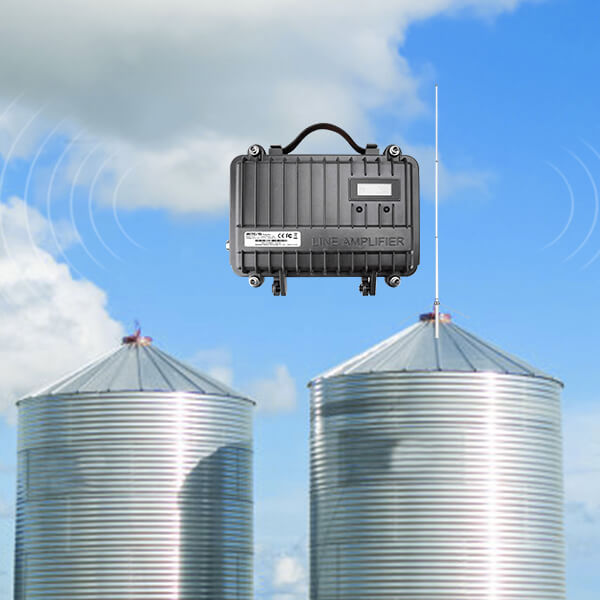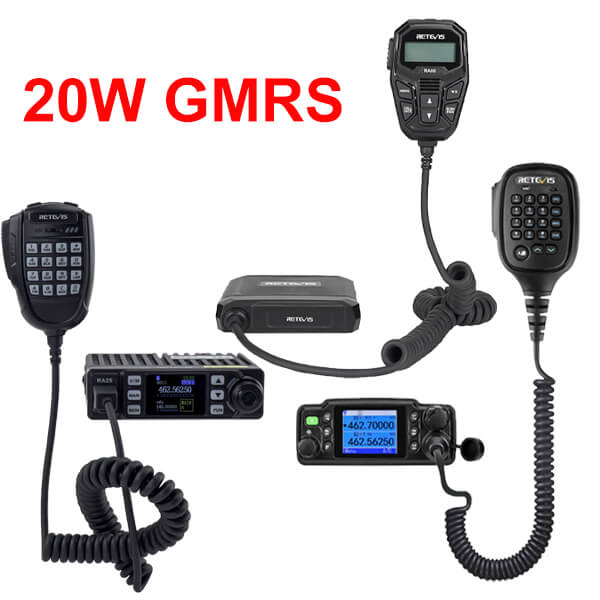GMRS Radio: The Best Way to Communicate Farming in Your Farm and Ranch?
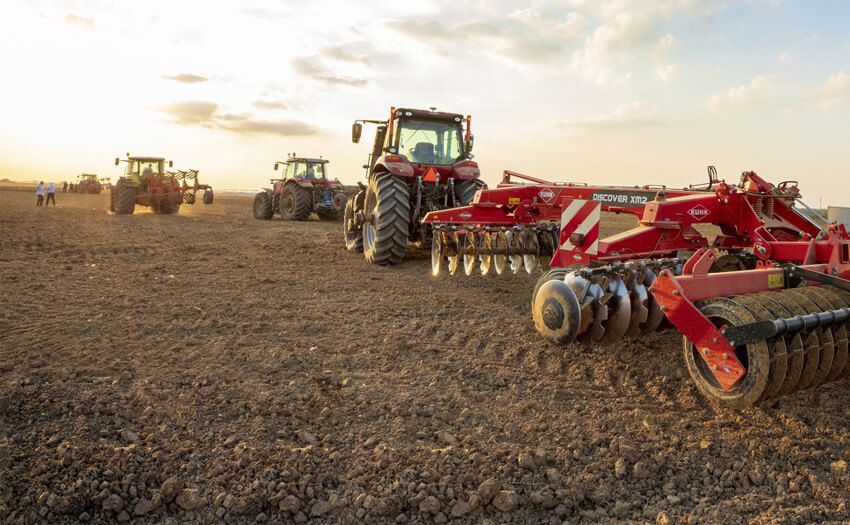
What is GMRS? Why do those four letters keep popping up in community conversations when discussing farm communication? What do those four letters mean? Why should you care? To answer those questions, let's explore the basics of GMRS.
There are several other types of radio services available in the U.S., and all are regulated by the FCC (Federal Communications Commission), including some you've undoubtedly heard of and may have used on the trail, such as CB (Citizen's Band Radio Service), FRS (Family Radio Service), MURS (Multi-Use Radio Service), and Amateur Radio Service (aka ham radio). Each is unique and worthy of study, but GMRS is the trend of the farm communication and reflective of the U.S. market.
GMRS Simply Defined
As defined on fcc.gov, The General Mobile Radio Service (GMRS) is a licensed radio service that uses channels around 462 MHz and 467 MHz. The most common use of GMRS channels is for short-distance, two-way voice communications using hand-held radios, mobile radios and repeater systems.
About GMRS Channels
GMRS has 30 total channels frequencies. Channels 1-7 are limited to a maximum effective radiated power (ERP) of 5 watts, channels 8-14 are limited to a maximum of ½-watt ERP (the FCC only allows handheld radios to transmit on these channels), channels 15-22 (and the eight repeater channels—more on those later) can have a maximum ERP of 50 watts. GMRS allows analog FM voice operation in the UHF (ultra high frequency) band, around 462 MHz and 467 MHz.
Please note that we are talking about 30 channel frequencies, most GMRS radios display channel numbers by default and not frequencies. The benefit to this is ease of use, they correspond to the frequency of GMRS. But you also need to know that there is no limit to the number of GMSR channels, which is why many gmrs on the market describe 200 channels, or even more, because they can be multiple channels Set the same gmrs frequency, but different tones, to realize calls with different organizations.
About GMRS license
GMRS requires an FCC license to transmit, but it is easy and inexpensive to acquire. You may apply for a GMRS license if you are "18 years or older and not a representative of a foreign government." and according to the FCC, the cost is $35 for 10 years without any test. "If you receive a license, any family member, regardless of age, can operate GMRS stations and units within the licensed system." A license can be obtained by going to the FCC Universal Licensing System (ULS) website to complete the application and pay the fee. Once approved, you'll be issued a call sign consisting of four letters and three digits.
The preceding is a portion of the FCC's GMRS requirements. A more detailed overview of GMRS rules and requirements can be found in the GMRS section of the National Archives and Records Administration website.
How GMRS Can Benefit Farmers
As a farmer, You must know how important it is to have reliable communication when you're farming. Cell phones typically aren't an option for always-on communication between tractors and combines, even if there is cell service where you're 'farming. Two-way radios have been used for decades in the farm community, with CB being the dominant choice, but GMRS is quickly becoming prevalent. This is partly due to a massive number of GMRS radio choices for a wide range of budgets. Also important is GMRS's ability to access repeaters to vastly increase communication range and potentially give you the ability to summon help in an emergency when cell phone service is unavailable.
GMRS Radio Choices
Selecting a GMRS radio is similar to selecting the right lubricant for your tractor. Just as there's a slew of lubricants on the market, there's a slew of GMRS radios, GMRS radios vary in features and cost. You need to determine how you plan to use the radio and how many dollars you wish to spend.
For famrer use, the most common is gmrs handy(commonly known in the radio world as "HTs") and gmrs mobile.
The vast majority of GMRS handy radios on the market are probably have 3-5 watts and more features. GMRS HTs range from inexpensive and basic to what is often referred to as "prosumer," with all the bells and whistles … and a higher price tag. Some GMRS HTs offer a removable antenna, so you can add a stubby antenna for use in tight quarters or an upgraded antenna to maximize transmit and receive range. Most radios with removable antennas also allow you to connect to an external antenna to increase range (for example, a magnet-mount antenna on the roof of your tractor). Some HTs require a dock to charge, some have a charge port that makes charging on the go easier. Some have repeater capability that can vastly increase communication range. Some HTs can be customized via software and/or the front panel. Also, some radios are IP rated to ensure they will work in dirty and/or wet conditions, such as those found when farming.
For gmrs mobiles, It is also the current market mainstream that will replace CB. There are various 12 volt powered 'mobile' GMRS radios on the market for use in vehicles or as base stations. GMRS mobile radios typically offer much higher power than GMRS HTs (up to the GMRS 50 watts max limit). This can translate into greater communication range. There are many mobile radios on the market today, and like the HT, they range from basic to prosumer. One important thing to keep in mind is that higher powered GMRS radios, such as 50 watt radios, will generally provide better range than lower powered radios.
But because GMRS mobile needs to be directly connected to the battery of the tractor or combines with high amperage. However, some lower powered GMRS mobile radios can be powered from your vehicle's 12 volt power point as they have lower current draw and most have a power plug on the wire.
Farm Repeaters and GMRS
A really cool feature of GMRS radios is the ability to utilize repeaters to greatly increase communication range. Most repeater antennas are located in barns or hilltops to increase receive and transmit range. Since GMRS range is usually limited by obstacles, a repeater system can provide a greatly increased communication range, which is definitely the best solution for large farms or ranches.
As an example of how a repeater can help you communicate while on a large farm, imagine you don't have cell phone service, but you need to speak to a tractor driver 5 miles away, separated by a forest. Your GMRS radio signal cannot penetrate trees and therefore cannot communicate. However, if there is a repeater at the top of the woods, it can take your radio signal, amplify it, and retransmit it, greatly increasing your range. How far you can communicate with a repeater depends on several factors, including your altitude, obstacles between you and the repeater, the height of the repeater antenna, the output power of the radio, the output power of the repeater, and the atmosphere situation. You don't have to worry about power supply, many relays support solar power.
As we said before, many GMRS two-way radios have repeater capability, but not all, so if you wish to use a repeater, you will need to make sure the GMRS radio you buy is capable of it. A GMRS radio with repeater capability is usually advertised by the manufacturer with a channel setup that transmits on the repeater's input frequency and receives on the repeater's output frequency. A GMRS radio with repeater capability will also provide the ability to select and transmit a repeater "PL tone", allowing access to the repeater. The PL tone is a sub-tone that turns on the input of the repeater to accept your radio transmissions. If this PL tone is not received, the repeater will not allow your radio communication to be accepted by the repeater.
If you need to find out if there is a repeater near you, you can visit mygmrs.com or the Arkansas GMRS Repeater Group. These websites are great sources of GMRS repeater information. You can visit these stations when needed to gather repeater information so that you can get licenses and program the desired PL tones into your farm's GMRS radio if necessary.
How about GMRS radio call distance?
The transmission range of GMRS radios is a recurring issue and it depends on the output power of the radios, the altitude at which each radio is used, obstacles between the radios (trees, buildings and eg), the antenna used for each radio, the radio power and other factors. The 5 watt handy gmrs radio we use can only transmit about ½ mile in cities, but can transmit over 7 miles in rolling farmland, with each radio being on high ground relative to the surrounding terrain.
For the upcoming selection of GMRS radio for farm use, our suggestion
Instead of asking what is the maximum range of the radio, it is better to think about the distance you need to multivariate. How much is your farmland? What is the range that is really needed? Most users will be perfectly fine with a 20W radio, but there are some perfectionists who want a maximum power of 50W.

